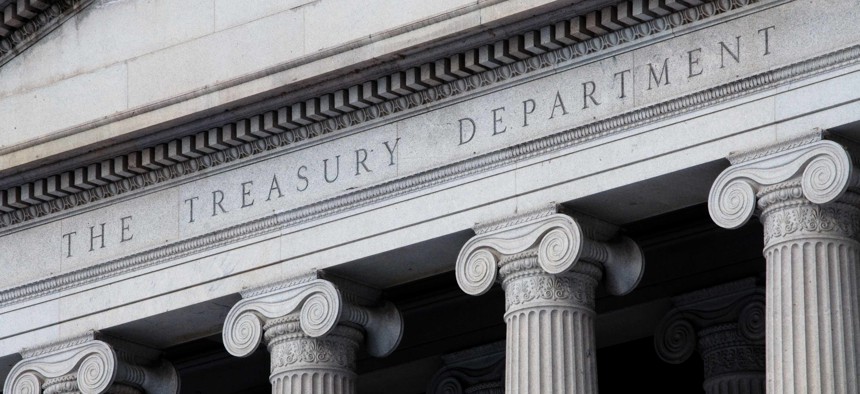Treasury Blocks State Charitable Deduction Workarounds to SALT Cap

Shutterstock
Taxpayers won't be able to write off contributions they make as charitable donations, if they receive tax credits in return.
Finalized rules the U.S. Treasury Department issued Tuesday will prevent states from offering a workaround to the recently imposed $10,000 cap on the deduction taxpayers can claim on their federal tax returns for the state and local taxes they’ve paid.
After the 2017 tax revamp imposed the limit on the so-called SALT deduction, states including Connecticut, New Jersey and New York moved ahead with plans to give their residents ways to circumvent it by making “charitable contributions” to help pay for public services.
The new federal rules blocking this strategy could also affect donations that were eligible for tax credits in some states prior to the SALT cap and went toward private and religious K-12 schools.
With the SALT workarounds, the idea was that taxpayers could claim a state tax credit against charitable contributions made to government entities, like school districts, or municipalities, lowering the state taxes they would otherwise owe. But unlike state and local taxes, these contributions would be fully deductible under the federal tax code.
The rules that Treasury and the Internal Revenue Service released on Tuesday, which were first proposed last August, would torpedo these sorts of arrangements.
Under the rules, if a state offers a 70 percent credit through one of these charitable contribution programs, and a taxpayer contributes $1,000 to it and receives a $700 state tax credit in return, the charitable contribution they could claim on their federal tax returns would then decline by $700, or the amount of the state credit.
In other words, the taxpayer would only be able to write off $300 as a federal charitable deduction.
Allowing taxpayers to claim the full deduction for contributions made in exchange for tax credits, “would result in significant federal tax revenue losses that would undermine the limitation on the deduction for state and local taxes,” rule-making documents say.
Treasury explained in an announcement that the rules are “based on a longstanding principle of tax law: When a taxpayer receives a valuable benefit in return for a donation to charity, the taxpayer can deduct only the net value of the donation as a charitable contribution.”
The Republican tax writers who drafted the tax package President Trump signed into law in December 2017 limited the federal deduction for state and local property, income and sales taxes to $10,000.
In doing so, they raised a projected sum of more than $600 billion over a decade to help pay for corporate and individual tax rate cuts and other changes to tax policy that they made.
This part of the tax law drew sharp opposition from some state and local government leaders, who claimed it unfairly targeted Democratic-leaning states that have higher taxes.
Local government groups also argued it would make it harder for localities to raise taxes to cover expenses because people would no longer be able to write off the full cost when filing their federal taxes.
New York Gov. Andrew Cuomo said in a statement Tuesday the new regulations "lack any basis in the law, upend decades of precedent without authorization from Congress, and target programs established by New York and other states to incentivize charitable contributions."
“Thanks to the Republicans' SALT cap, New Yorkers are being used as ATMs, footing an additional $15 billion each year that will be redistributed to red states and corporations,” he added. Cuomo, a Democrat, has been one of the more outspoken opponents of the cap.
Estimates that experts at the Urban-Brookings Tax Policy Center cited last year suggested that, in 2018, 96 percent of the additional tax from the limitation of the SALT deduction would be borne by the top 20 percent of taxpayers and 57 percent by the top one percent.
Tax credits that don’t exceed 15 percent of a donation are exempt from Tuesday’s rule-making. So a taxpayer who makes a $1,000 contribution is not required to reduce it on their federal income tax return if the state or local tax credit they received, or expect, is $150 or less.
Treasury and IRS also plan to allow taxpayers whose state and local tax deductions are below the $10,000 limit to treat charitable contributions made in exchange for state tax credits as though they were state and local taxes, until they max out the $10,000 deduction.
Apart from the policy-making around the SALT deduction, 18 states have offered tax credits for taxpayers who contribute money to private and religious K-12 school voucher funds, according to the Institute on Taxation and Economic Policy, or ITEP.
The group says that these sorts of programs allowed some high-income taxpayers who claimed both a large state tax credit and the federal tax deduction for charitable contributions to receive tax benefits that were larger than their actual donations.
Carl Davis, research director for ITEP, noted on Tuesday that while some advocates had argued that the rule-making should not apply to private schools, “the IRS wisely rejected that argument and will treat donations to all types of entities in the same way.”
“The regulations inject a welcome bit of common sense into the federal tax code’s definition of ‘charity,’” he added. That said, ITEP still takes issue with how the regulations will treat investors that donate stock and other property in exchange for credits.
The final regulations are effective Aug. 11, but apply to contributions made after August 27, 2018.
Bill Lucia is a Senior Reporter for Route Fifty and is based in Olympia, Washington.
NEXT STORY: How One City Gets Residents to Actually Participate in the Budget Process






